Spacewalking Astronauts Replace Old Batteries on Space Station
The space station's big power upgrade is now halfway done.
NASA astronauts Nick Hague and Christina Koch successfully completed a spacewalk at the International Space Station today to continue an ongoing power upgrade at the orbiting lab.
The spacewalkers spent 6 hours and 45 minutes working to replace a set of old nickel-hydrogen batteries with new lithium-ion batteries located on the station's P4 truss, where one of the station's solar arrays is located. These batteries hold the charge generated by the solar arrays and power the space station when it's not in direct sunlight.
Hague and Koch did work that's similar to what was done during the previous spacewalk on March 22. During that spacewalk, Hague and NASA astronaut Anne McClain swapped out six old nickel-hydrogen batteries with three new lithium-ion batteries on another power channel at the station's P4 truss.
Related: The International Space Station: Inside and Out (Infographic)
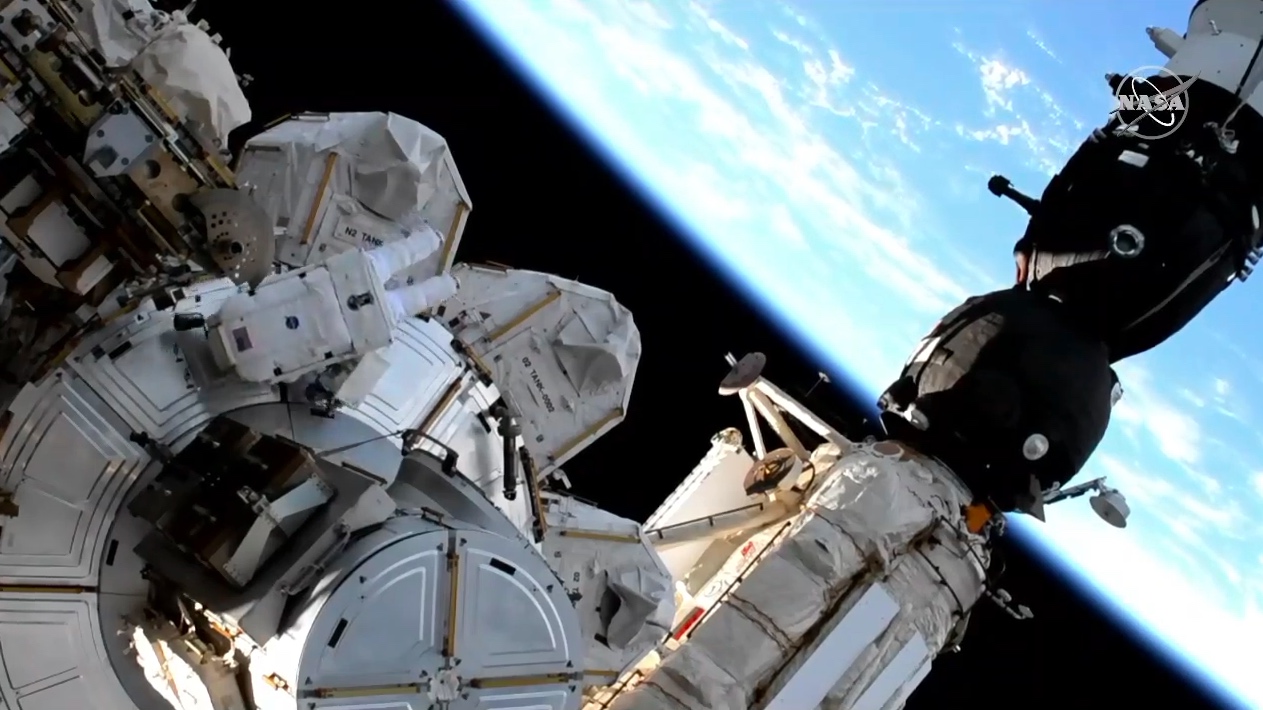
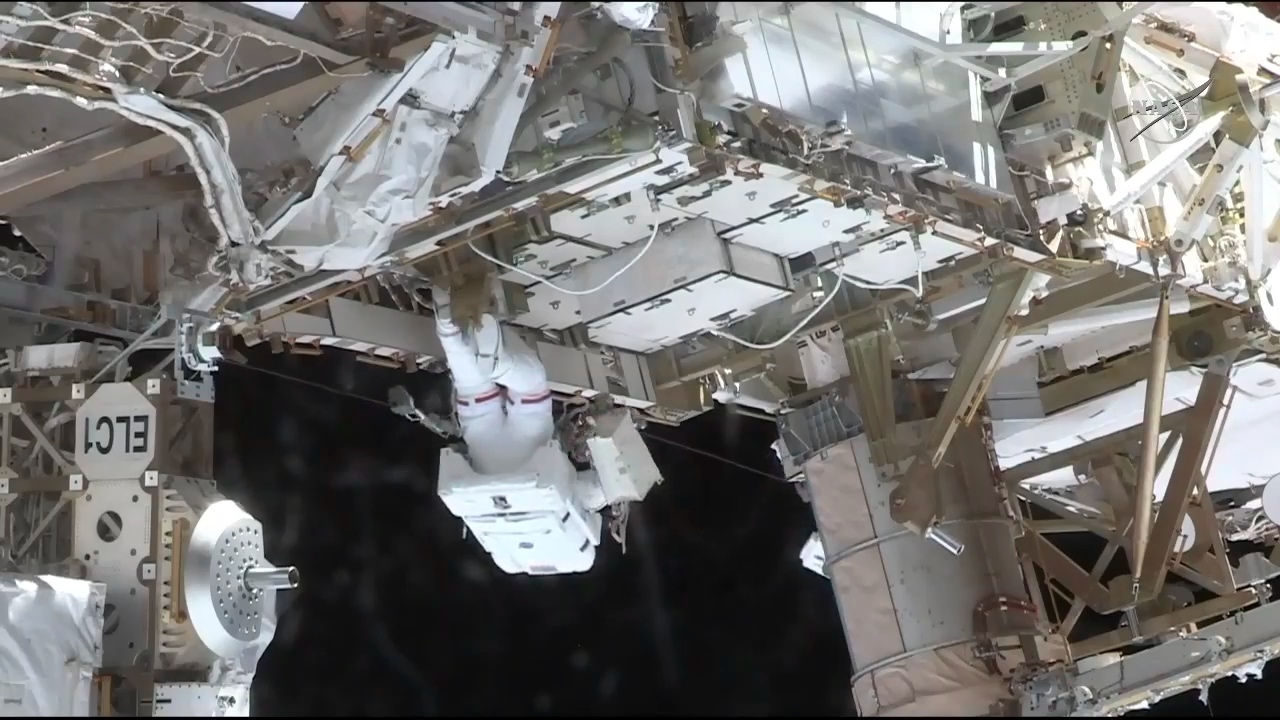
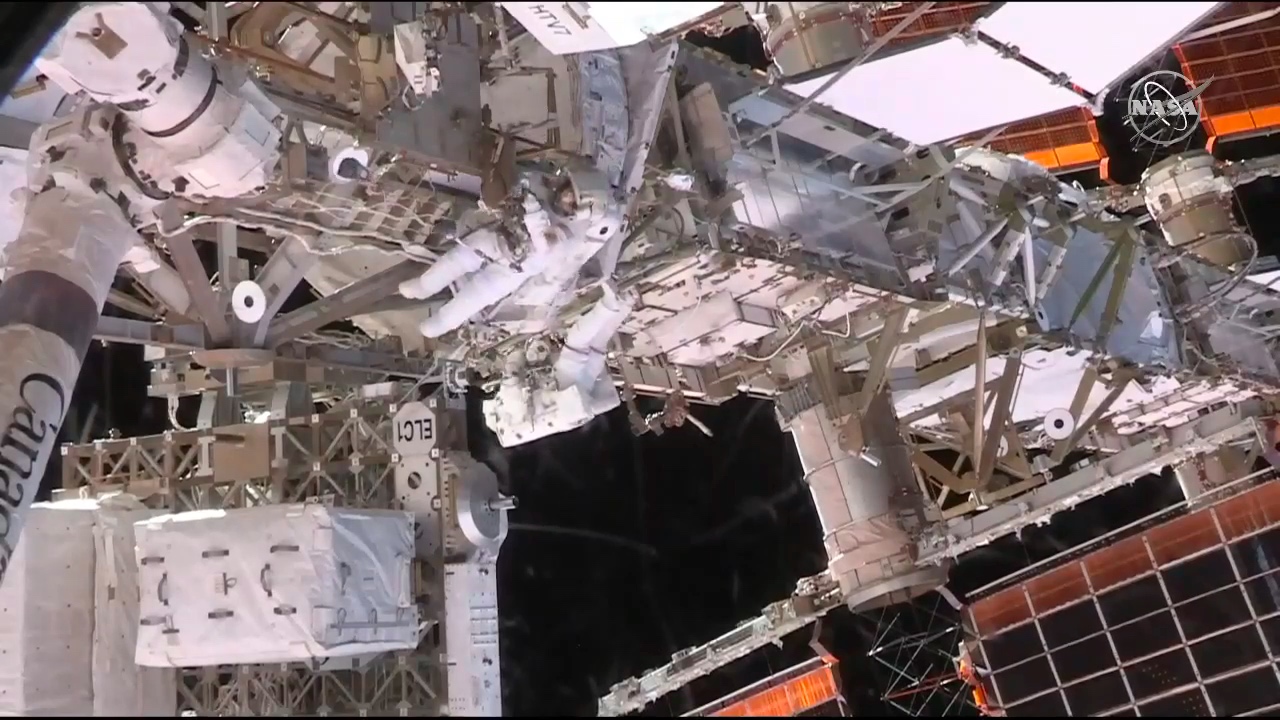
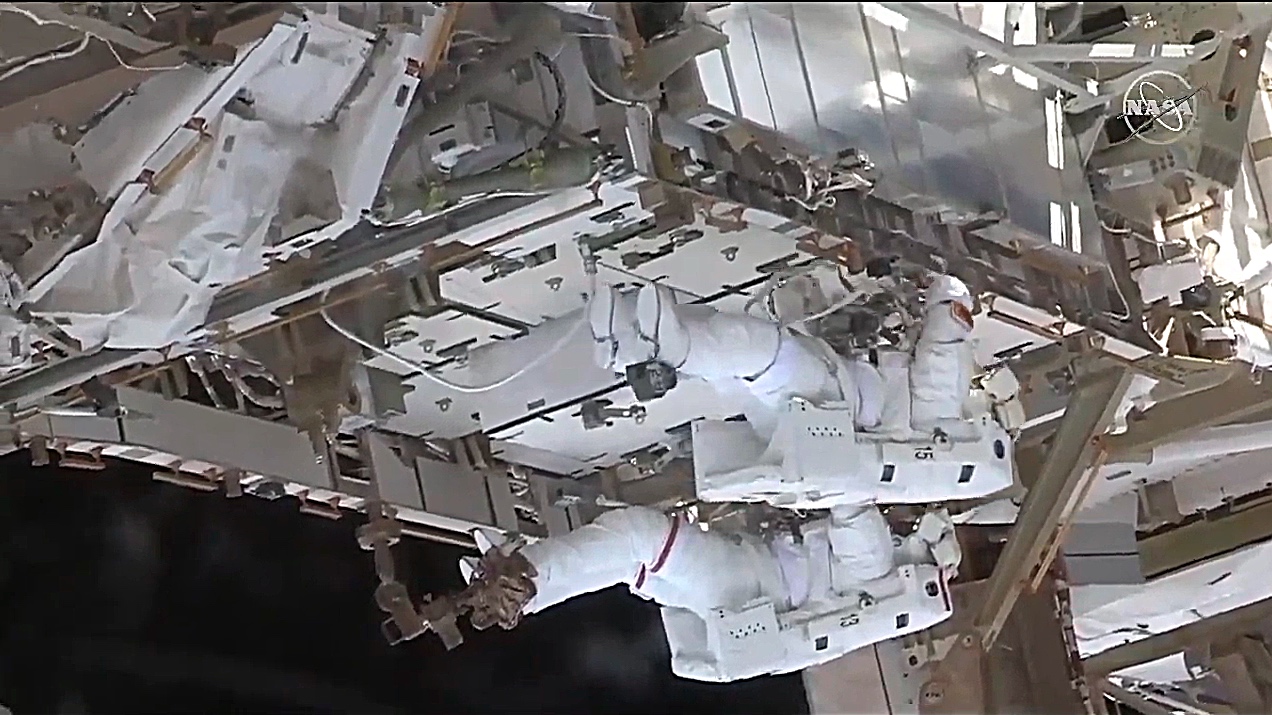
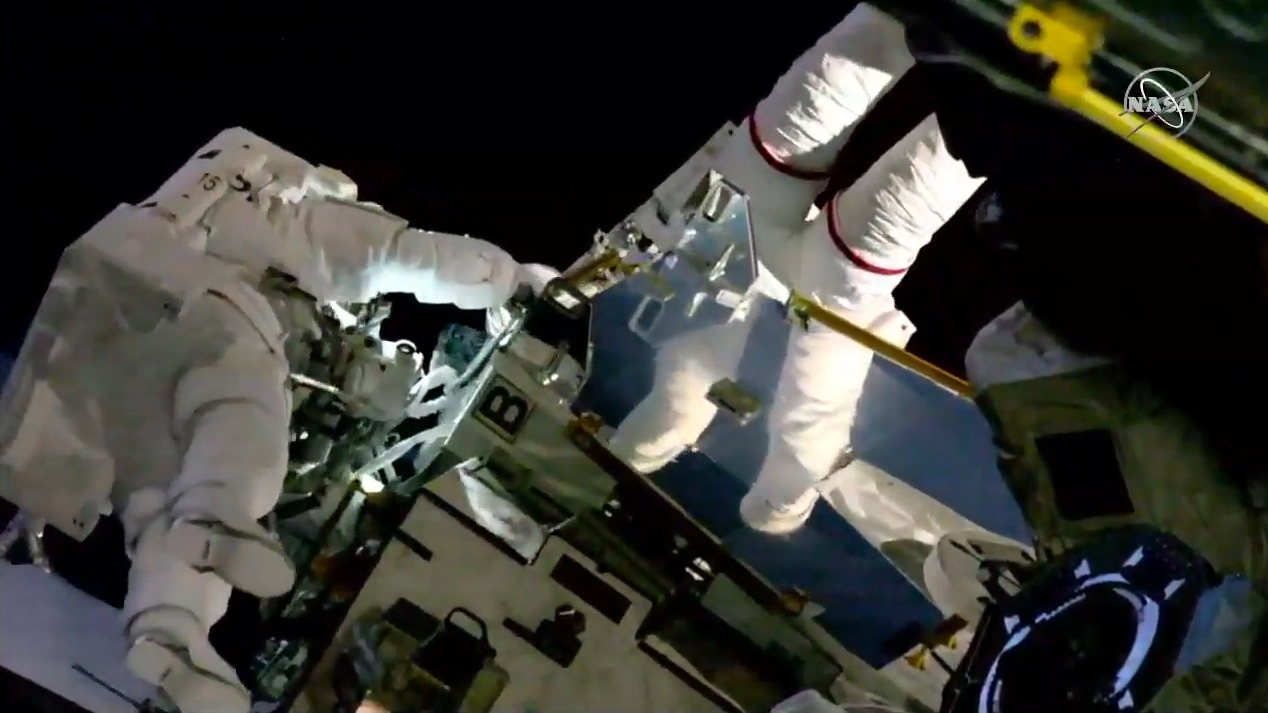
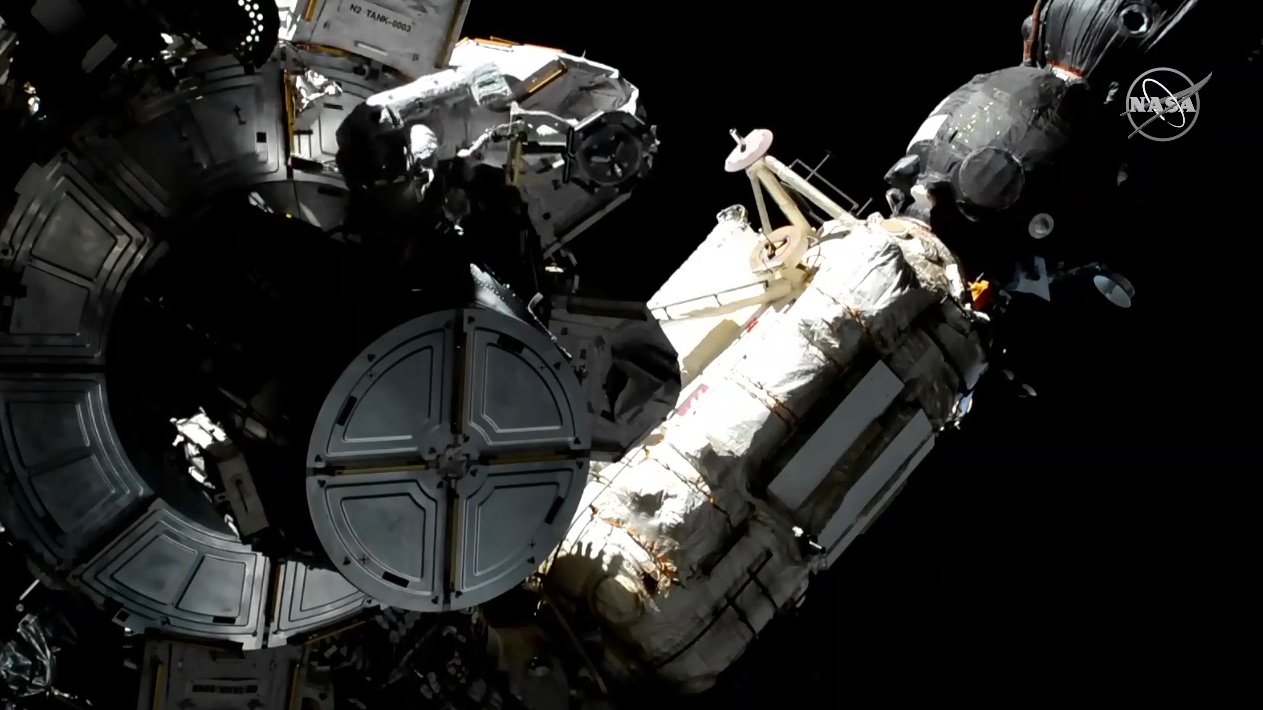
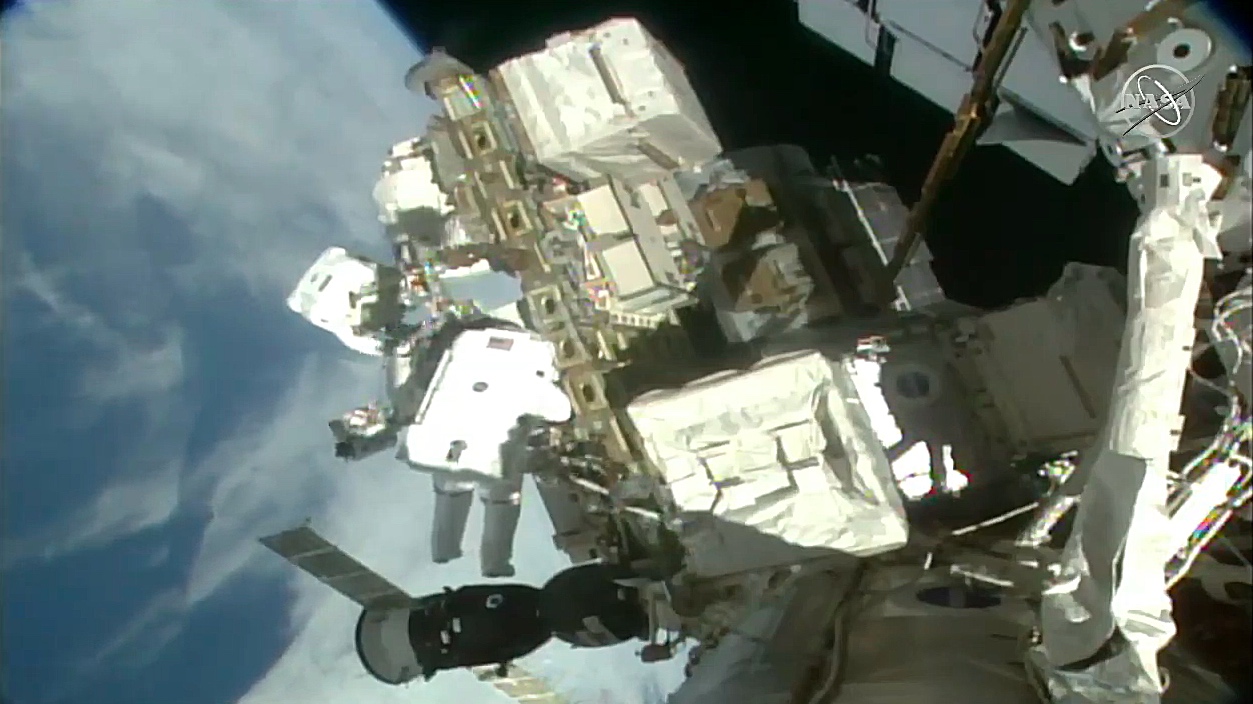
Although these two spacewalks were planned to be almost identical, NASA had to make a quick change in plans after encountering a problem with one of the new lithium-ion batteries installed last week. After that spacewalk was completed, ground controllers at NASA's Johnson Space Center in Houston activated the newly upgraded power channel to test out the new batteries.
The ground crew "saw more voltage than expected" in one of the three batteries and were "not sure why" it was malfunctioning, Branelle Rodriguez, NASA's lead space station mission evaluation manager, said during a live webcast of today's spacewalk. "Essentially, we don't know if that battery is good anymore," Rodriguez said. So, that lithium-ion battery will need to be replaced with the two nickel-hydrogen batteries that it was intended to replace — undoing some of the work that Hague and McClain did last week.
As one of their "get-ahead tasks" today, Koch and Hague did some work to prepare for that battery swap, but they didn't actually replace it themselves. The bulk of that work is done robotically from the ground using the station's Canadarm2 robot arm. All the spacewalkers needed to do was disconnect some cables and move the adapter plate — one of the three that Hague and McClain installed last week — out of the way, leaving all the "heavy lifting" to Canadarm 2.
Get the Space.com Newsletter
Breaking space news, the latest updates on rocket launches, skywatching events and more!
Technically, the batteries don't actually weigh anything in microgravity, but the 428-lb. (194 kilograms) units are each about the size of a minifridge and can be difficult for an astronaut to lug around outside the station.
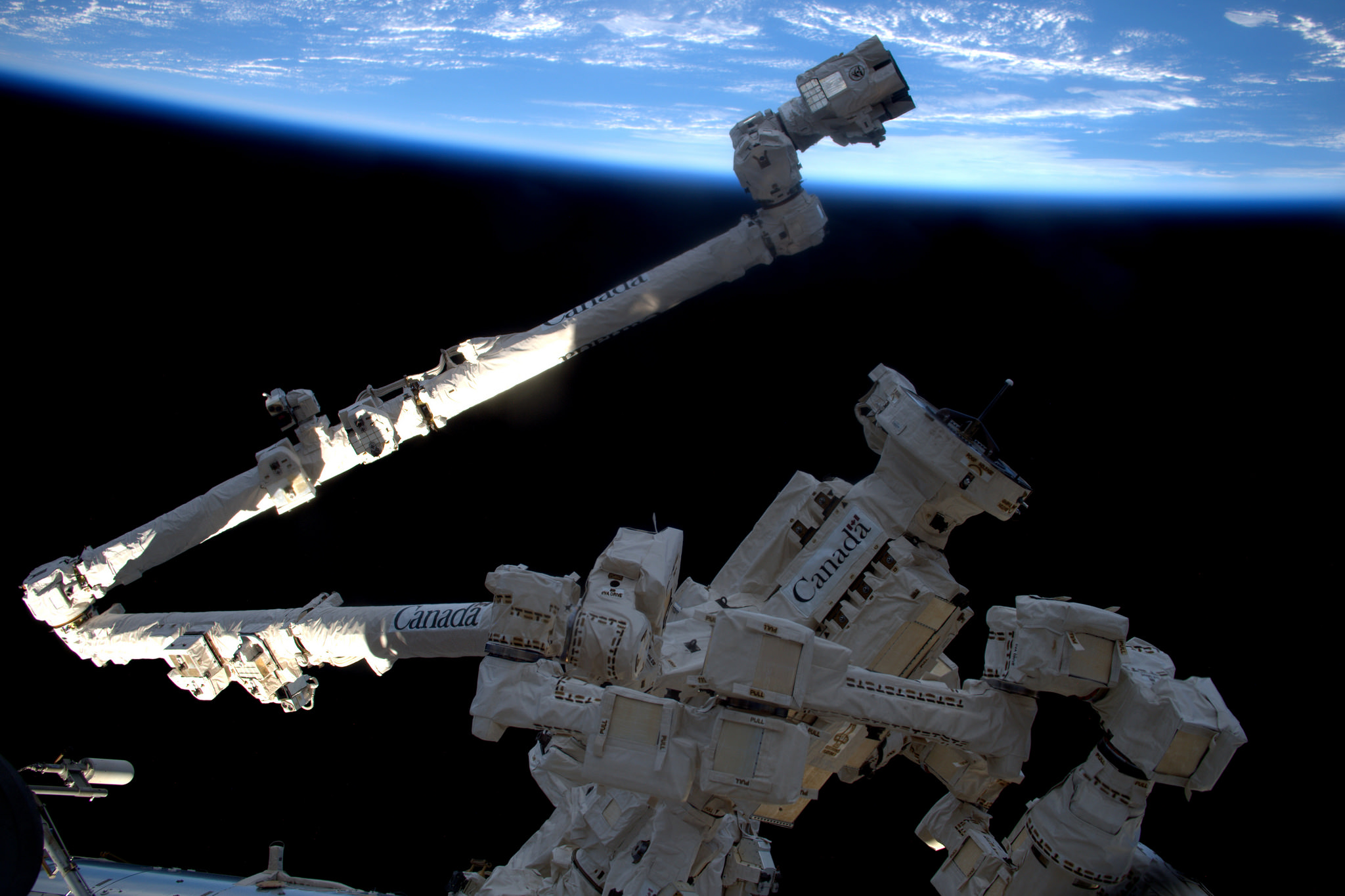
Over the next week, ground controllers will remotely operate Canadarm2 to put the two old nickel-hydrogen batteries back in their original spot. Once NASA launches a spare lithium-ion battery, astronauts will install it during a future spacewalk, Rodriguez said.
Some minor hiccups
Although the spacewalkers successfully completed all of their main tasks and "get-ahead tasks" with time left to spare, it wasn't exactly "smooth sailing" for the astronauts today. They did experience a few minor technical difficulties, though thankfully, none of those obstacles jeopardized the mission.
Nick Hague hit his first bump in the road while loosening the bolts on one of the old nickel-hydrogen batteries that the spacewalkers were replacing. As often happens during spacewalks, one of the bolts just didn't want to budge. Ground controllers helped him troubleshoot, and he managed to break it free. Shortly afterward, he encountered more trouble while installing a portable foot restraint, but he eventually got that piece of hardware to cooperate, too, without putting the mission behind schedule.
"That must be a great view, European Space Agency astronaut Thomas Pesquet, who served as the spacewalk communicator alongside the ground control team, told Hague.
"Hard to describe — not sure I have the words," Hague replied. "I sure wish everybody down there on the team could see it."
"We do have a view of you, so that's even better,” Pesquet said, to which Hague replied, "I'm not so sure about that."
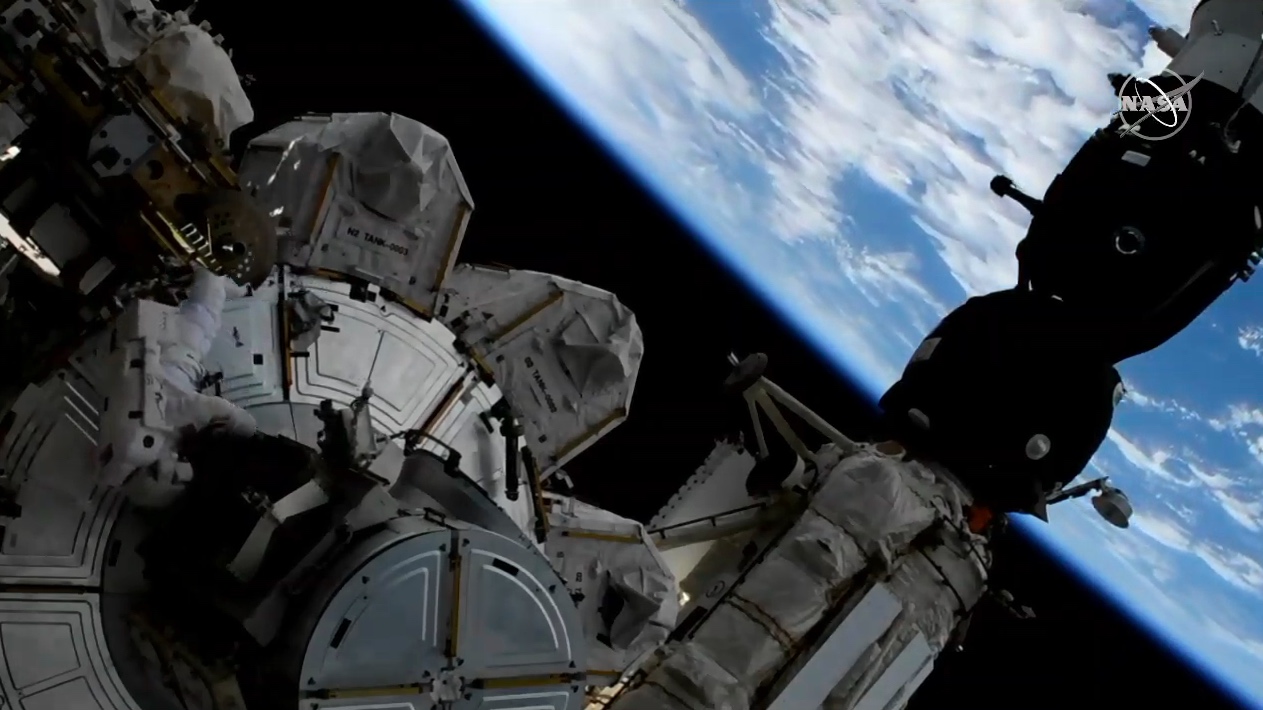
Later, while both spacewalkers were getting ready to move the third and final adapter plate, Hague reported seeing some debris. "Um, I see metal flakes coming out of the socket," Hague said. He then inspected the work site to figure out what those flakes were and where they came from, but it's still not clear what caused these flakes to appear.
Koch also encountered a minor problem with her spacesuit. Ground controllers told her that she had a "possibly failed" carbon-dioxide sensor in her suit and asked her to closely monitor herself for any signs of rising carbon-dioxide levels. Thankfully, Koch did not report any physical symptoms of breathing high levels of carbon dioxide — something that could potentially cause respiratory failure.
More spacewalks to come
The two spacewalks this month are a continuation of work that began in 2017, when the Expedition 50 crew replaced a total of 12 nickel-hydrogen batteries with six lithium-ion batteries over the course of two spacewalks.
It will take at least another four spacewalks to complete the work, NASA's space station program manager Kenneth Todd said during a news conference earlier this month. Although those spacewalks have not yet been scheduled, NASA is aiming to tackle those in late 2019 and early 2020.
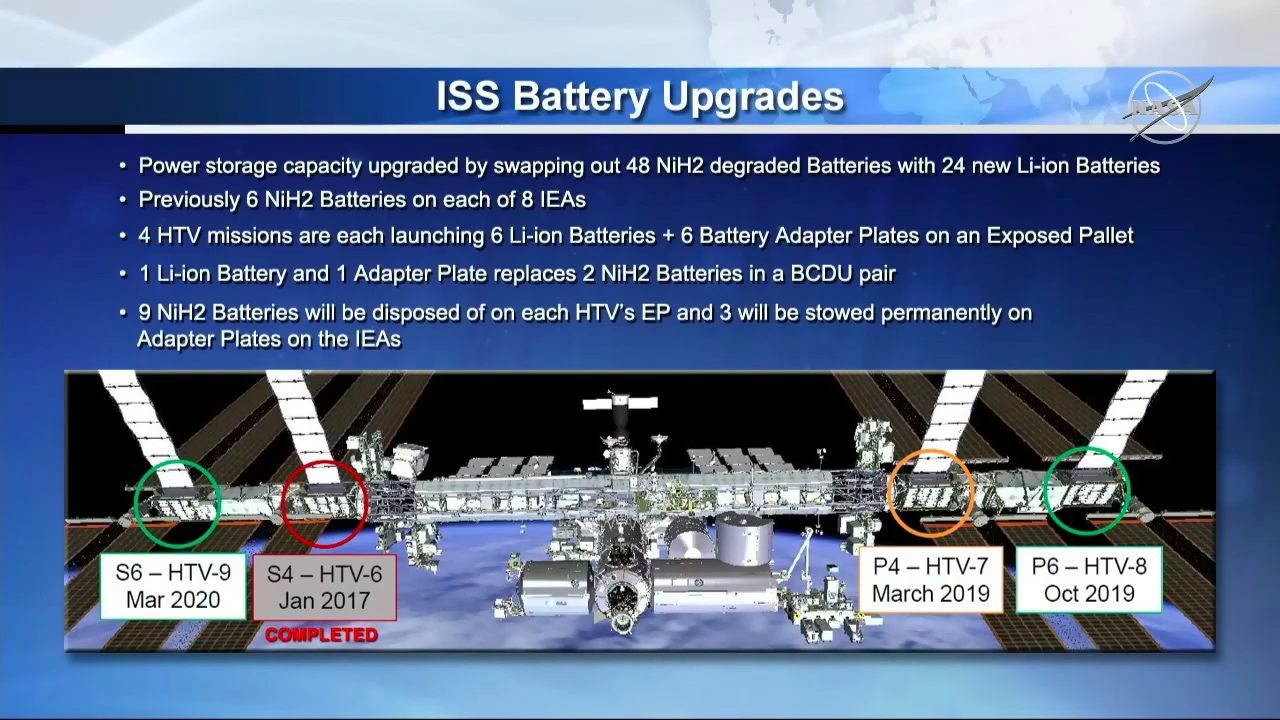
By the end of these spacewalks, a total of 48 nickel-hydrogen batteries will have been replaced with 24 lithium-ion batteries. These batteries are expected to last until the end of the space station's life. While they are certified to last for 10 years, NASA expects them to be fully functional for about 20 years, NASA spokesperson Kelly Humphries told Space.com in an email. NASA is planning to end its funding of the International Space Station in 2024, although lawmakers are currently fighting to extend operations until 2030.
A major milestone that wasn't
Today's spacewalk would have been the first to be done by a crew of only women, but a spacesuit sizing issue led NASA to swap crew assignments, thereby postponing this historic milestone for women in space.
McClain, who was originally scheduled to join Koch on today's spacewalk, decided that the size-large spacesuit she had planned to wear today would not fit properly. Because only one medium-size suit at the station had been prepped for the current series of spacewalks, and Koch was planning to wear it today, Hague wore the large suit instead and took McClain's place. McClain is now scheduled to take another spacewalk on April 8 with Canadian Space Agency astronaut David Saint-Jacques.
During that next spacewalk, the astronauts will be working on some maintenance tasks unrelated to the ongoing battery-replacement work. Instead, McClain and Saint-Jacques will be installing some jumper cables to give Canadarm2 a redundant power supply. They will also be upgrading the station's wireless communications network by installing new cables.
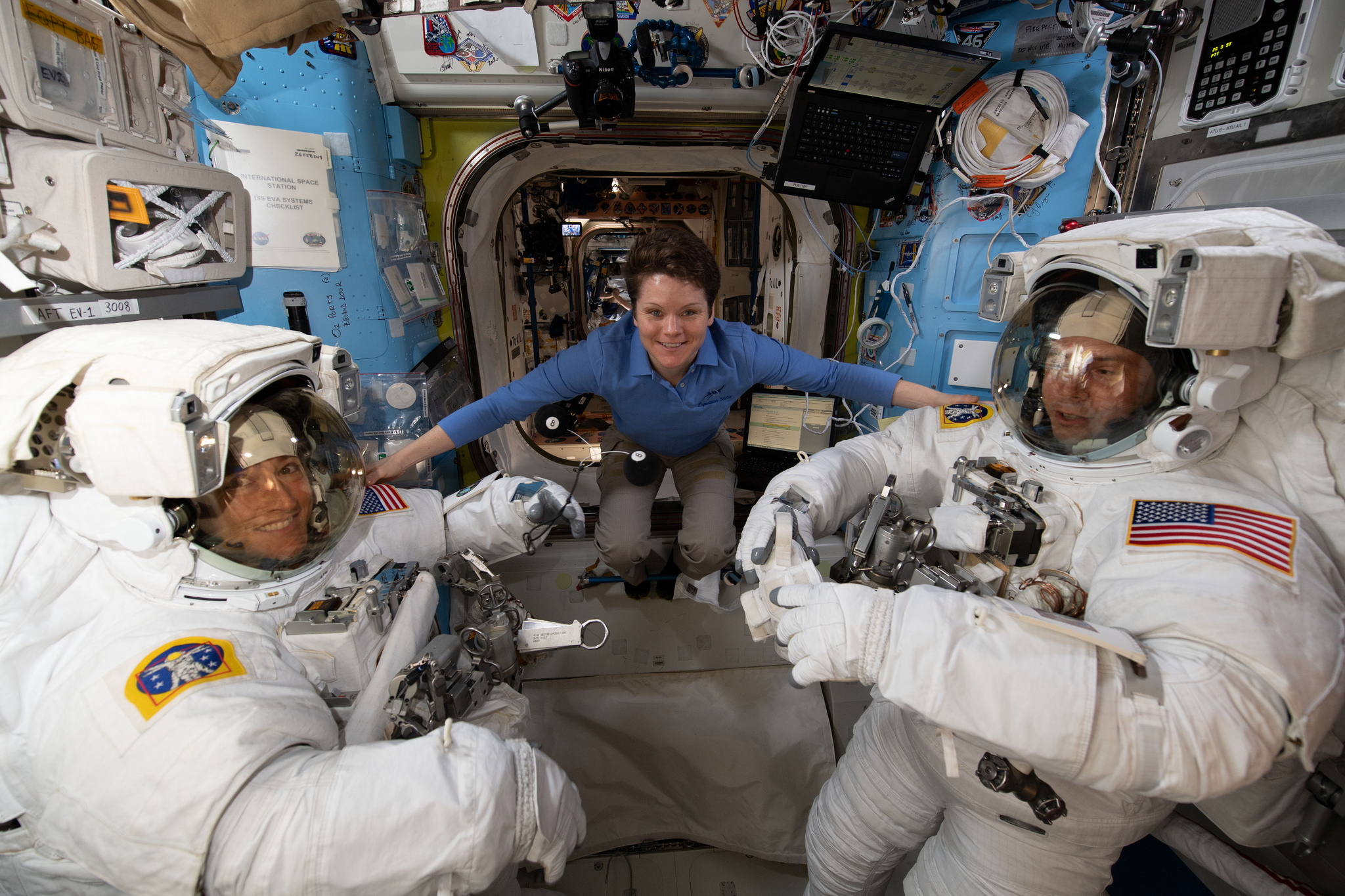
Spacewalk stats
Today's spacewalk was the first for Koch and the second for Hague, who has now accrued a total of 13 hours and 24 minutes of spacewalking time. It was the 215th spacewalk that astronauts have done to build and maintain the International Space Station.
Koch is now the 14th woman to have completed a spacewalk, and McClain became the 13th during her spacewalk on March 22. For comparison, more than 200 men have taken spacewalks. Since the very first spacewalk in 1965, there have been 404 spacewalks in all, only 39 of which involved a female spacewalker.
While it may be disappointing that NASA didn't end up doing the first all-female spacewalk in history today, agency officials have assured observers that the milestone is "inevitable," because more and more women are joining NASA's astronaut corps.
- Kathy Sullivan, 1st American Woman to Walk in Space, on the All-Female Spacewalk That Could Have Been
- Expedition 59: The Space Station Mission in Photos
- FAQ: How Do Astronauts Take Spacewalks?
Email Hanneke Weitering at hweitering@space.com or follow her @hannekescience. Follow us on Twitter @Spacedotcom and on Facebook.
Join our Space Forums to keep talking space on the latest missions, night sky and more! And if you have a news tip, correction or comment, let us know at: community@space.com.

Hanneke Weitering is a multimedia journalist in the Pacific Northwest reporting on the future of aviation at FutureFlight.aero and Aviation International News and was previously the Editor for Spaceflight and Astronomy news here at Space.com. As an editor with over 10 years of experience in science journalism she has previously written for Scholastic Classroom Magazines, MedPage Today and The Joint Institute for Computational Sciences at Oak Ridge National Laboratory. After studying physics at the University of Tennessee in her hometown of Knoxville, she earned her graduate degree in Science, Health and Environmental Reporting (SHERP) from New York University. Hanneke joined the Space.com team in 2016 as a staff writer and producer, covering topics including spaceflight and astronomy. She currently lives in Seattle, home of the Space Needle, with her cat and two snakes. In her spare time, Hanneke enjoys exploring the Rocky Mountains, basking in nature and looking for dark skies to gaze at the cosmos.









